#majolica glaze
Explore tagged Tumblr posts
Text
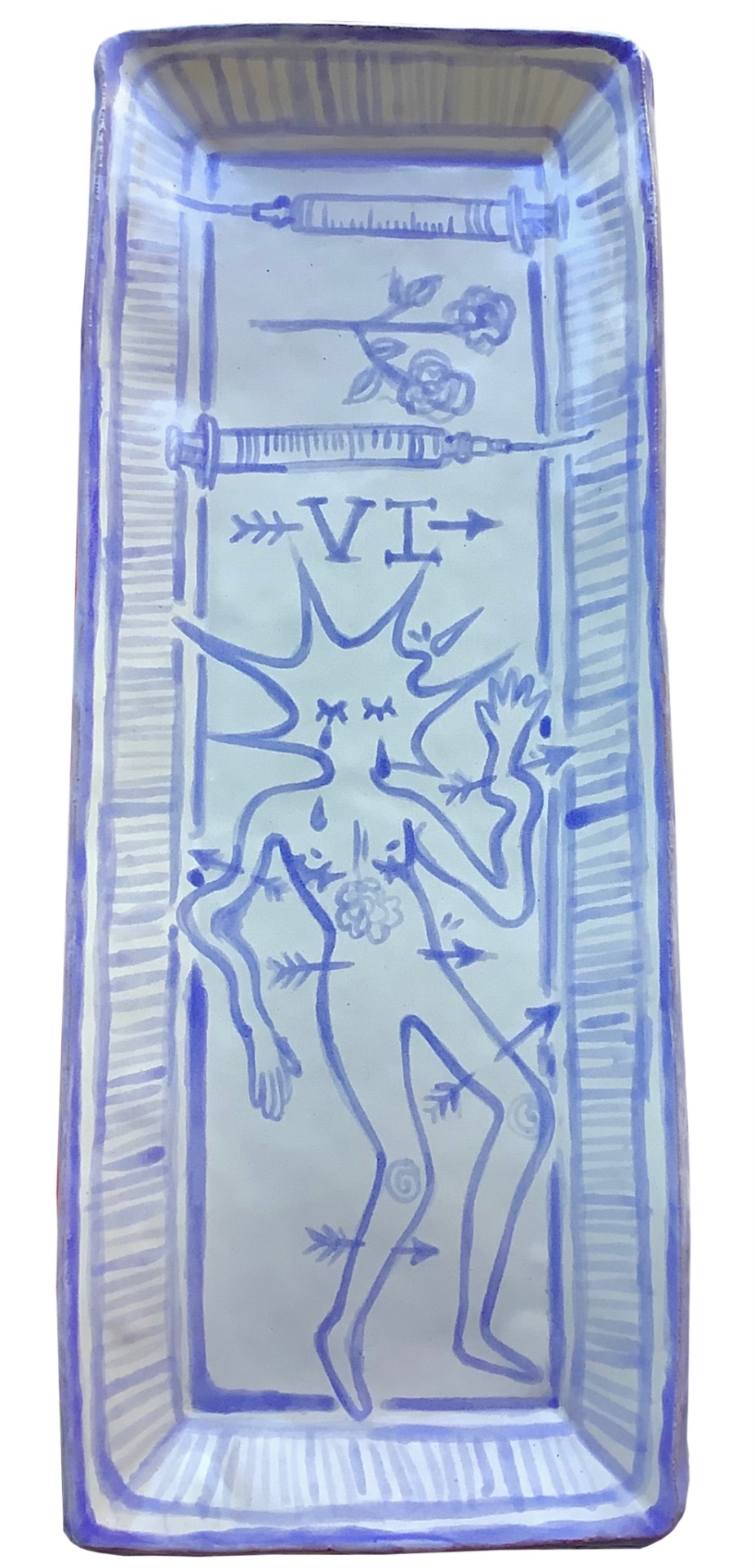
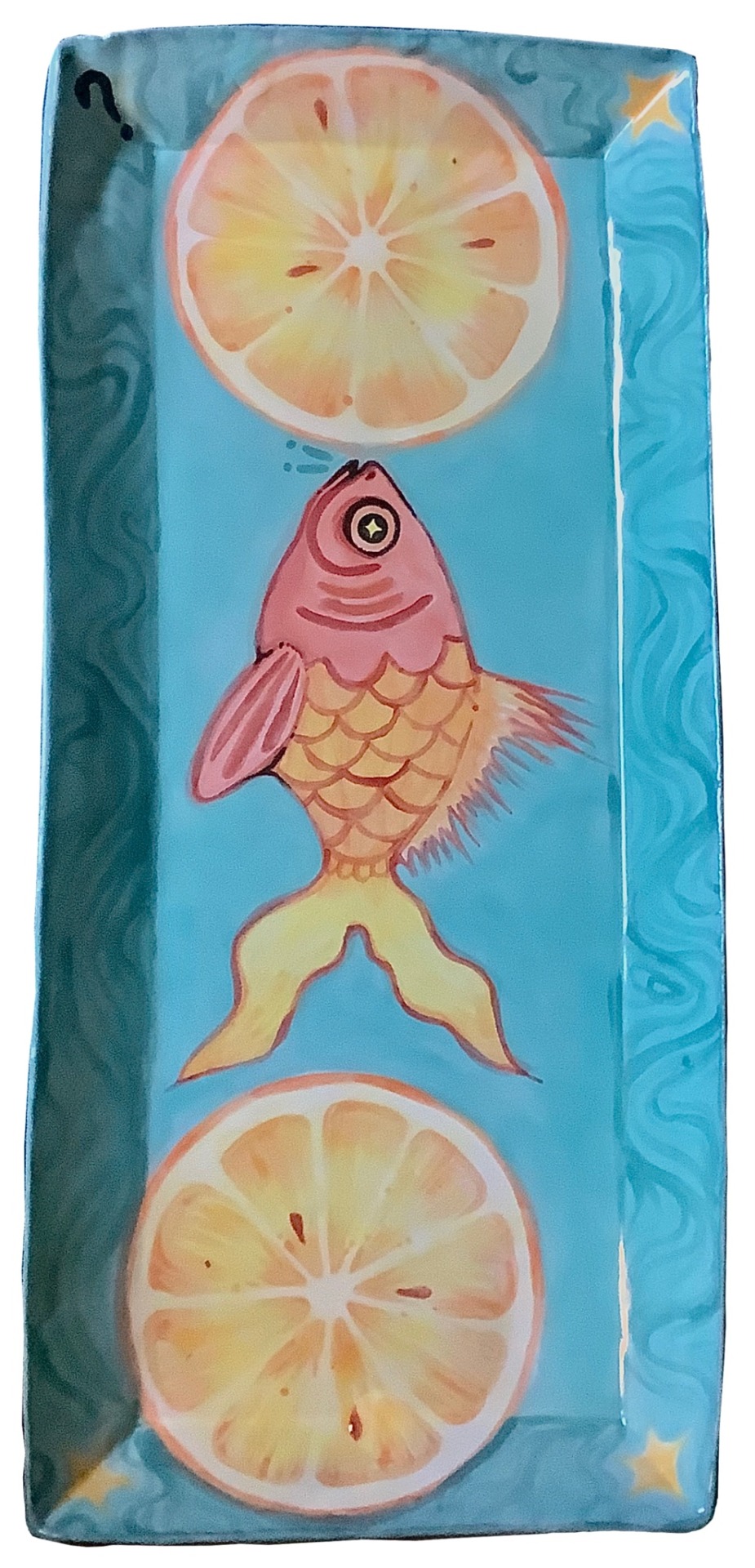
plates from last semester celebrating my 5th year out as trans <3
#i fell in love with ceramics when i was taking that class but it's such an expensive medium#wanna try and make pins from air dry clay eventually dunno yet#majolica#majolica glaze#ceramics#pottery#transjoy#lgbt#trans art#plates#ceramic plates#fattylime#lime made art
594 notes
·
View notes
Text

big boye....
#this thang was the most time consuming... had to be 15in tall or wide (as wet clay) and not only did i have to remake the MAIN pot.#but the cover tried falling apart on me and i almost had a meltdown god#this one used majolica glaze ! i need to get updated photos of the entire outside bc its narrative.#my art#ceramics#pottery#animals
5 notes
·
View notes
Text
More European Renaissance Art Vocabulary

for your next poem/story
Halo - The gold circle or disk placed behind the heads of Christ and saints, a symbol of their sanctity or the light of God.
Hatching - The drawing or engraving of fine parallel lines to show shading. When the lines intersect each other, it is called cross-hatching.
Horizon Line - The line where the sky and earth appear to meet. The horizon line is drawn across the picture at the artist’s eye level.
Hue - A particular variety of a color, shade, or tint.
Lunette - A semicircular shape.
Magus - A member of the ancient Persian priestly caste, skilled in Eastern magic and astrology. In the New Testament, the Magi are the three wise men who came from the East to pay homage to the newborn Christ Child.
Majolica - Tin-glazed earthenware.
Palazzo - An Italian word used to describe a large building. It may be a mansion or palace, or an official government building like a town hall, court, or embassy.
Passion, or The Passion of Christ - The events surrounding the Crucifixion of Christ; a popular subject for religious drama, painting, and sculpture.
Perspective - A technique that artists use to represent the three dimensional world on a two-dimensional surface, such as a piece of paper, canvas, or wood panel. Using perspective, an artist can create the illusion of depth or space and show the proper proportion between objects. Without perspective, a painting or drawing will appear flat.
Pictorial Space - The illusion of three-dimensional space created on a two-dimensional surface.
Predella - An Italian word for the series of small paintings that form the lower section of large altarpieces. It usually has narrative scenes from the lives of the saints who are represented on the main and side panels of the altarpiece.
Putto - From the Latin word meaning “male child.” In 15th- and 16th century poetry and painting, putti are depicted with wings and connected with the god of love, Eros, also known as Cupid.
Red - In Christian paintings, a symbol of the blood of Christ or the Passion.
Relief - A raised surface; for example, sculpture that is carved or modeled and which projects from a background.
Star - In Christian paintings, a symbol of divine guidance or favor. The Star of the East guided the three Magi to Bethlehem.
Triumph - An ancient Roman tradition honoring the return of a victorious general, who paraded his soldiers, prisoners, and spoils through the city streets.
Tromp L’oeil - French for “fool the eye”; a style of painting intended to trick the viewer into believing that the minutely observed objects shown are part of the viewer’s three-dimensional world.
Vanishing Point - The point where parallel lines appear to meet on the horizon line.
Source ⚜ More: Word Lists ⚜ Part 1
#renaissance#art#terminology#writing inspiration#writeblr#dark academia#writing reference#langblr#spilled ink#creative writing#light academia#literature#writers on tumblr#poets on tumblr#writing prompt#poetry#art reference#michelangelo#writing resources
223 notes
·
View notes
Text






Green Majolica Glazed Fern Leaf Server, Vintage Wall Ceramic Clock, Green Ribbon, Räder Flower Power Herz Kleeblatt / Shamrock Heart, Frog & Toad, Do you ever think about me?
217 notes
·
View notes
Text
#TurtleTuesday 🐢:

Majolica Tortoise Teapot by Minton, England, 1878 Tin-glazed earthenware, H. 11.9 cm
#animals in art#european art#19th century art#majolica#teapot#tortoise#turtle#ceramics#pottery#Minton#British art#English art#Turtle Tuesday#decorative arts#sculpture
235 notes
·
View notes
Text

Las Misiones, Montevideo: On the corner of 25 de Mayo and Misiones, Café Las Misiones attracts tourists and locals alike for its old façade from 1900 with green majolica (glazed ceramics) and large windows that allow you to be in touch with the movement of the city. Inside, the living room retains several original architectural elements such as its wooden door, mosaic floors and large stained glass ceiling. Café Las Misiones offers a wide variety of sandwiches, croissants, doughs and pastries to accompany a coffee or tea in the morning or afternoon. For lunch, the proposal consists of 6 chef's suggestions with meat, pasta, fish, chicken and pork.
96 notes
·
View notes
Text

~ "MAJOLICA VASE, late 19th century, by George Jones (British, 1824-1893), (fly catcher bud vase). George Jones majolica pieces were notable for their intricate designs, which often included floral motifs, animals, and other naturalistic forms. The glazes used by Jones were highly varied, with colors ranging from vivid greens and blues to deep browns and yellows." ~
4 notes
·
View notes
Text
Words I've learnt reading Invisible Cities:
Calcareous - high in calcium, usually referring to rocks
Noria - a type of waterwheel that lifts water into an aqueduct
Planisphere - navigation instrument that displays a star chart which can be kept current based on the date
Odalisque - a seraglio attendant
Ephebe - adolescent male, usually in military training
Mullion - a vertical stone divider in a window
Mandrel - refers to various tools used in machining; Calvino is referring to a type used with a lathe to hold materials in place
Cambered - slightly arched
Lunette - the semi-circle of panelling or glass you sometimes have at the top of a door
Corbel - architectural feature; a bracket built into (not fixed to) a wall to support something on top of it, often decorated
Majolica - a type of pottery with a tin-based glaze
"I learnt a new word" is kind of the most juvenile thing you can get from a book, especially since any book where I learn a lot of new words is probably going to be one with real intellectual heft behind it. Obviously I didn't read Invisible Cities to learn new words.
But that doesn't mean I'm not pleased to learn these things. There is a real satisfaction to laying them out like this, there is a kick I get out of having to look them up, and there is always a quality I enjoy in books where obscure words are regularly used. It's a texture that I appreciate.
#i have left out one type of bird and also the word metope.#i will forget the bird#and i'm not sure i could define metope in a way that distinguishes it from any other recessed part of a frieze.#invisible cites
6 notes
·
View notes
Text
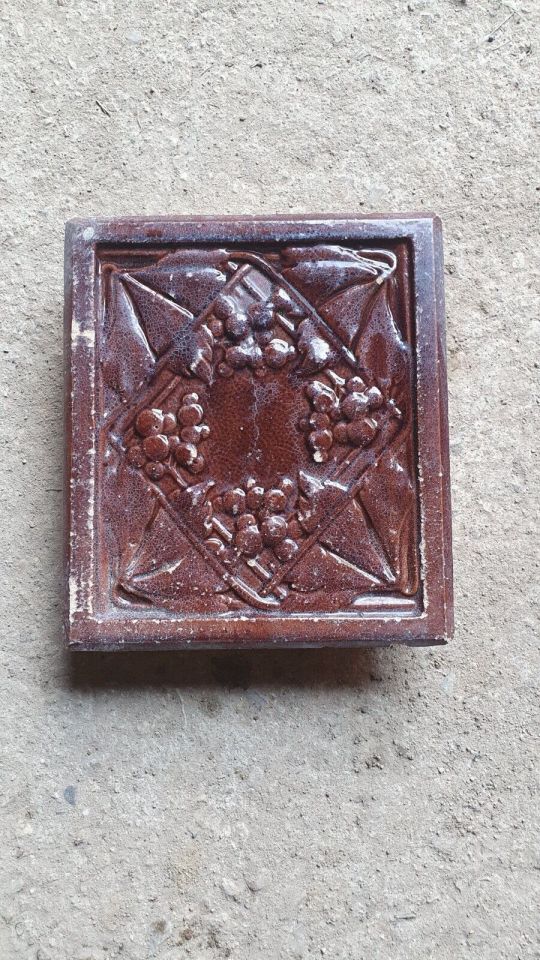
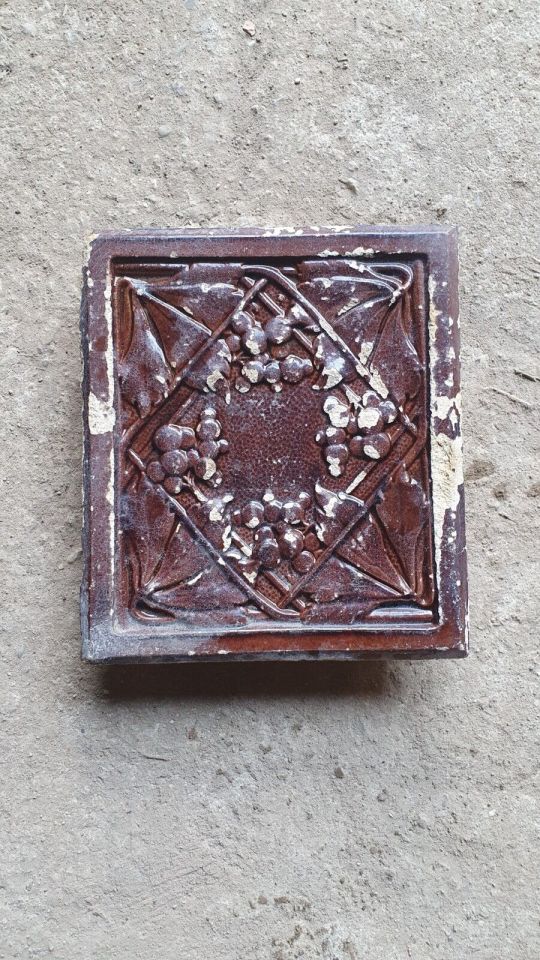
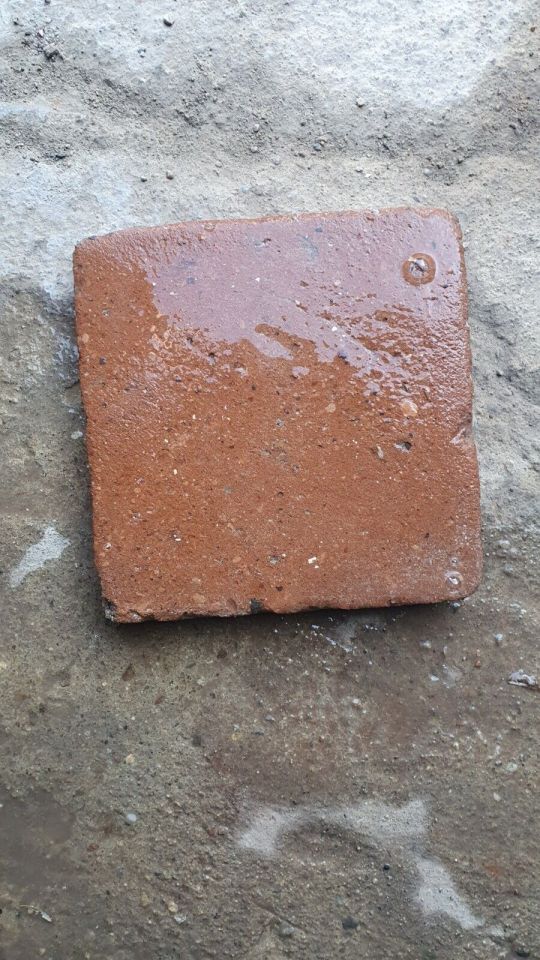
Original antique french majolica glazed tile from stove ebay antiquemateril
6 notes
·
View notes
Text
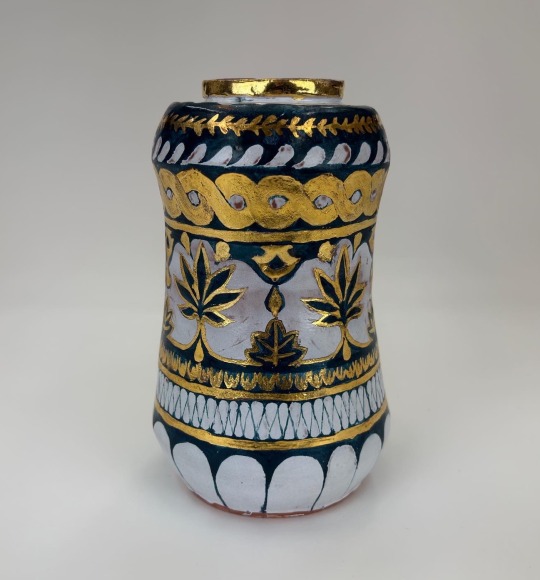
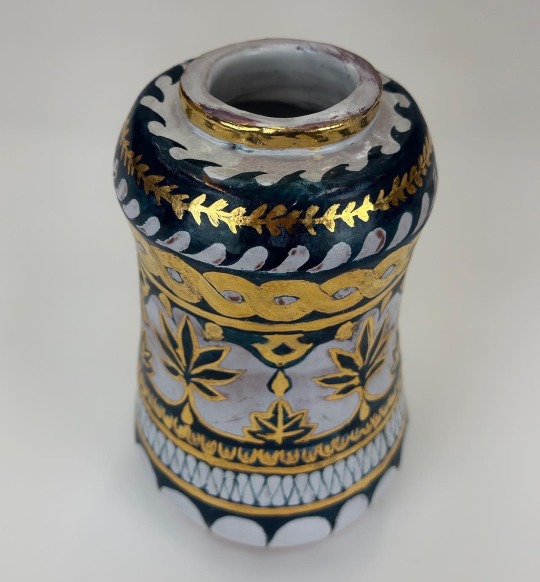
cannabis albarello — 9” earthenware, majolica glaze, majolica stain, brilliant gold luster
inspired by scythian goldsmithing and a stolen ukrainian artifact
#contemporary ceramics#ceramics#ceramicist#ceramic art#pottery#albarello#earthenware#majolica#gold luster#my work
2 notes
·
View notes
Text
Cultural Inspirations: Global Designs in Modern Tableware
March 10, 2025
"Dining is more than just eating; it’s an experience that reflects traditions, cultures, and aesthetics."
Tableware is more than just plates and glasses—it tells a story, a narrative shaped by the heritage and artistry of different cultures. From the delicate craftsmanship of Japanese ceramics to the intricate hand-painted designs of Moroccan pottery, modern tableware blends traditional artistry with contemporary aesthetics, creating a unique and elevated dining experience.
At BlackCarrot, we draw inspiration from global cultures to bring you tableware that not only enhances your dining table but also carries a touch of timeless elegance. Let’s take a journey through some of the most fascinating cultural influences in modern tableware design.
1. Japanese Minimalism: The Art of Wabi-Sabi
The Japanese philosophy of Wabi-Sabi embraces simplicity, imperfection, and natural beauty. Japanese ceramics, particularly from regions like Arita and Seto, feature muted earth tones, asymmetrical shapes, and raw textures, bringing an organic charm to dining.
Popular Elements: Matte glazes, handmade pottery, delicate porcelain.
How to Style: Pair minimalist stoneware plates with wooden chopsticks and neutral-toned linens for an effortlessly elegant setting.
2. Moroccan Patterns: Vibrant and Hand-Painted
Moroccan pottery is a feast for the eyes, featuring bold geometric patterns, bright colors, and hand-painted motifs. The rich cultural history of Morocco shines through its intricate designs, often seen in tagines, serving bowls, and ceramic plates.
Popular Elements: Blue and white zellige patterns, floral motifs, hand-glazed finishes.
How to Style: Mix colorful Moroccan plates with gold-toned cutlery and rich fabric napkins for a warm and inviting tablescape.
3. Italian Elegance: The Art of La Dolce Vita
Italian tableware reflects the country’s deep appreciation for art, food, and celebration. From the exquisite hand-painted ceramics of Tuscany to the elegant porcelain of Capodimonte, Italian dinnerware is known for its classic designs, floral detailing, and artistic flair.
Popular Elements: Majolica pottery, floral hand-painted plates, luxurious porcelain.
How to Style: Pair with rustic wooden chargers and fresh flowers for a sophisticated yet effortless dining experience.
4. Indian Craftsmanship: Intricate and Timeless
Indian tableware showcases heritage craftsmanship, from the delicate gold accents of Mughal-inspired designs to the vibrant, hand-painted motifs of Rajasthan. Copper and brass serveware also play a significant role in traditional Indian dining.
Popular Elements: Hand-etched metal plates, blue pottery, gold-accented ceramics.
How to Style: Use a mix of patterned ceramic plates with brass cutlery and textured table linens to create a rich, opulent aesthetic.
5. Scandinavian Simplicity: Functionality Meets Design
Scandinavian design is all about clean lines, neutral tones, and functionality. Inspired by the Nordic lifestyle, tableware from this region embodies a sense of warmth and understated elegance.
Popular Elements: Matte ceramic plates, simple silhouettes, monochrome color palettes.
How to Style: Pair Scandinavian stoneware with minimalist glassware and soft, neutral-toned tablecloths for a modern, cozy feel.
6. French Sophistication: A Blend of Tradition and Luxury
French tableware is synonymous with effortless elegance. Whether it’s the classic Limoges porcelain or the timeless beauty of Provencal ceramics, French tableware is designed to add refinement to any setting.
Popular Elements: Fine porcelain, delicate floral motifs, gold accents.
How to Style: Complement with antique silverware and linen napkins for a touch of Parisian charm.
How Global Designs Inspire BlackCarrot’s Collections
At BlackCarrot, we blend global influences into our modern tableware collections, offering pieces that are both stylish and timeless. Our ceramics, stoneware, and glassware take cues from these rich traditions, ensuring that every dining experience is as much about aesthetics as it is about functionality.
Whether you prefer the rustic charm of Italian majolica, the intricate Moroccan hand-painted ceramics, or the serene simplicity of Japanese stoneware, our collection allows you to bring a piece of world culture to your table.
Final Thoughts: Elevate Your Dining Experience with Cultural Aesthetics
The beauty of modern tableware lies in its ability to tell a story. By incorporating heritage designs into contemporary pieces, we create settings that are both meaningful and beautiful.
Explore BlackCarrot’s latest collections and discover tableware that is inspired by the world, crafted for your home.
#TablewareTrends #CulturalDesigns #BlackCarrotStyle
0 notes
Text

Christianity and Ceramics: A Sacred Connection
Ceramics have long held a special place in Christian traditions, intertwining faith with the art of clay. From the humble vessels used in early religious rituals to the ornate tiles adorning cathedrals, pottery has served both practical and symbolic roles in Christianity. This note delves into this sacred relationship, highlighting how ceramics have shaped worship and devotion, with a few intriguing facts to deepen the story.
In the early Christian era, simple clay cups and bowls were essential for communal meals, including the agape feasts that echoed the Last Supper. These unadorned pieces reflected the faith’s emphasis on humility and fellowship. As Christianity grew, ceramics evolved into tools of expression. By the Middle Ages, majolica tiles—brightly glazed and painted with biblical scenes—decorated church floors and walls, turning sacred spaces into visual sermons. Monasteries often became centers of ceramic production, with monks crafting items like censers and chalices for liturgical use.
Symbolism runs deep in this craft. Clay, shaped by human hands and hardened by fire, mirrors Christian themes of creation and transformation—God molding humanity from dust, as in Genesis, or refining souls through trials. The potter’s wheel itself has been a metaphor in sermons, drawing from Jeremiah 18:6, where God is the potter shaping His people.
Ceramics also mark Christian milestones. Baptismal fonts, often made of glazed stoneware, have welcomed generations into the faith, while intricately designed reliquaries of clay or porcelain have housed saints’ relics, blending artistry with reverence.
Facts and Figures
Early Evidence: Archaeologists have unearthed over 2,000 ceramic oil lamps from 1st- to 3rd-century Christian sites in the Holy Land, many inscribed with crosses or fish symbols, used in worship and burial rites.
Medieval Output: In 13th-century Italy, the town of Orvieto produced an estimated 50,000 majolica tiles for its cathedral, depicting stories from the Old and New Testaments—a project spanning decades.
Today, ceramics remain a bridge between the earthly and the divine in Christianity, whether through a potter’s quiet devotion or a cathedral’s timeless beauty. This enduring craft continues to tell a story of faith, one vessel at a time.
1 note
·
View note
Text
Incomplete List of Glaze Families and Histories
*** Realizing as I make this how expansive glaze histories are. I do in general want to know what people mean when they say something is a celadon or a shino or a tenmoku, etc. I am limited my list to glazes I have encountered in the studio/ in class.
Celadon
youtube
Song dynasty: 11th, 12th, 13th century China (this particular video). Also produced/have roots in Japan and Korea. Often pale bluish green (from small amount of iron oxide in glaze, reduction fired). Adding more iron oxide makes it dark brown/black-ish.
Other video tutorials refer to celadon as translucent and pooling.
Chun
Majolica
youtube
White glaze base (invented in Britain) intended to make brown clays look like chinese porcelain. Most popular between 1851 to WW1. Decorated originally with bright lead-based overglazes (yikes)
Oil Spot
Oxblood (Sang-de-Boeuf)
Peach Bloom
Raku
Shino
youtube
Traditional Shino: 70% feldspar, 30% clay
Carbon Trap: traditional shino with soda ash or salt (3-30%)
If a recipe has too much clay, it may crawl (John Britt says over 20% clay). You can also "calcine" half of the clay component. This means that you take out the physical property of shrinkage.
Soda ash in a shino glaze (once dipped) will migrate to the surface of the glaze (where water is evaporating). This is a laminate.
youtube
"Citron" skin effect
Japanese glaze.
"Originally Shinos were a two-part mix of about 70-80% high-alumina, high-sodium feldspar and 20-30% clay. They were used on stoneware and wood-fired in reduction. Applied thickly they gave a pearly white, when thinner a red or orange. While it is claimed that the combination of high sodium and alumina produce that orange color, it seems that would not be possible without iron. In fact, it is the chemistry of the glaze that hosts the color, amplifying the color of small amounts of iron in the clay (within the glaze or in the body itself) to produce the orange color."
Tenmoku
"A reduction fired glaze, having about 10% iron oxide, that fires to a high-gloss deep maroon to black color."
The simplest way to make a tenmoku is add iron oxide to a transparent cone 10 reduction recipe.
FeO is a powerful flux in reduction so adding more may cause it to run. In oxidation this doesn't happen.
1 note
·
View note
Text
The History of Ceramics: From Ancient Art to Modern Craft
Ceramics, one of humanity's oldest and most enduring art forms, has evolved significantly from its ancient origins to contemporary practices. This article will explore the rich history of ceramics, highlighting key developments, techniques, and cultural significance, all while showcasing some of the best ceramic products available today.
Ancient Beginnings
The story of ceramics dates back to around 29,000 BC, with the discovery of the Venus of Dolní Věstonice, one of the earliest known ceramic figurines. Early humans used clay to create functional items such as pots and bowls, which were essential for storing food and cooking. These ancient artisans employed primitive firing techniques to harden clay, leading to the development of the first ceramic wares.
The Rise of Pottery
As civilizations progressed, pottery became an integral part of cultural identity. In ancient Mesopotamia, Egyptians, and Chinese societies, ceramics evolved into more sophisticated forms, with intricate designs and advanced glazing techniques. The invention of the potter's wheel around 3,500 BC revolutionized pottery-making, allowing for greater uniformity and creativity in design.
Ceramics in Different Cultures
Throughout history, various cultures have developed their unique styles of ceramics. For instance, the delicate porcelain of China became highly sought after, influencing global trade. In Europe, the Renaissance saw a resurgence of interest in ceramic art, leading to the creation of beautiful Delftware in the Netherlands and Majolica in Italy.
Modern Innovations
The Industrial Revolution brought about significant changes in ceramic production, introducing mass production techniques that made ceramic products more accessible. Today, artisans continue to push the boundaries of ceramic art, exploring new materials, glazing methods, and artistic expressions.
The Best Ceramic Products Today
In the modern era, the market is flooded with best ceramic products that blend traditional craftsmanship with contemporary design. From functional dinnerware to striking decorative pieces, these ceramics reflect both artistry and utility. Consumers are increasingly drawn to unique, handcrafted items that tell a story and enhance their living spaces.
Conclusion
The history of ceramics is a testament to human creativity and innovation. From ancient functional pottery to the best ceramic products of today, this art form continues to thrive, offering endless possibilities for artistic expression and practical use. Embracing the rich legacy of ceramics can inspire us to appreciate the craftsmanship behind each piece, making our everyday lives more beautiful.
This outline incorporates the theme of the history of ceramics while effectively integrating the keyword "best ceramic products." If you need further elaboration on any section or additional details, feel free to ask!
0 notes
Text
For #WorldHoneyBeeDay 🍯🐝:

Beehive with Blackberry Branches (Cheese Stand)
Minton & Co., design registered 1862
glazed earthenware (majolica)
(Photographed at the Majolica Mania exhibition the Walters Art Museum in 2022.)
#animals in art#animal holiday#european art#19th century art#majolica#museum visit#exhibition#pottery#ceramics#beehive#World Honey Bee Day#cheese stand#Walters Art Museum#British art#Minton & Co.
17 notes
·
View notes
Text



Majolica Jardiniere Pottery Planter 6 inches Glaze Art Wonderful Green Brown Depth of color 1920's - 4 legs - Succulent
#etsy#vintage#vintage home decor#retro#vintage planter#majolica jardiniere#jardiniere pottery#1920s#planter#plant mom
0 notes